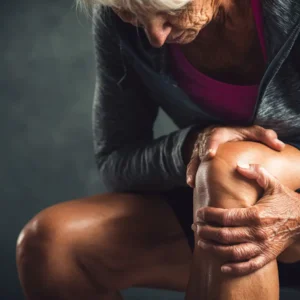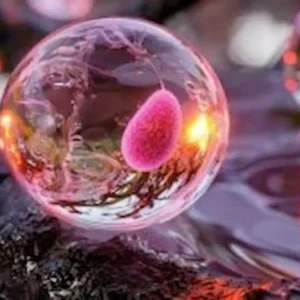If you’re exploring Stem Cell Therapy, you’re probably you’ve probably found yourself scrolling through clinic websites, reading research studies, and trying to understand a lot of unfamiliar language
That’s why we’ve put together this glossary. It breaks down the most common terms you’ll come across in a simple, easy to understand way. Whether you’re reading a scientific paper or a clinic website, you’ll know exactly what those words mean and how they fit into stem cell treatment.
The structure of the boxes are as follows:
- Explanation of key term
- Clinic: How clinics will use this term
- Research: How Researchers and Research papers will use this term
What Stem Cells are
Cells that can turn into other types of cells and help repair or support damaged tissue in stem cell therapy.
Clinic: “Stem cell therapy offers patients a natural option for supporting healing and reducing inflammation.”
Research: “Stem cells administered in this trial showed improvement in functional outcomes of treated joints.”
The most commonly used cells in stem cell therapy, taken from fat, bone marrow, or umbilical sources, known for calming inflammation.
Clinic: “Our treatments use mesenchymal stem cells to reduce pain and support joint repair.”
Research: “Patients receiving MSC therapy demonstrated significant improvement in mobility scores.”
The ability of stem cells to change into other cell types, like bone, cartilage, or nerve cells.
Clinic: “Some stem cells may aid repair by supporting differentiation into cartilage-like cells.”
Research: “MSC differentiation into chondrocytes was confirmed by expression of collagen II.”
The way stem cells work by releasing signals (growth factors, cytokines) that tell nearby cells to repair or reduce inflammation.
Clinic: “Much of stem cell therapy works through the paracrine effect, where cells send healing signals.”
Research: “The paracrine effect of MSCs was responsible for improved vascularization in treated tissue.”
If you’re looking at Stem Cell Clinics abroad, the biggest risk your taking is going to a clinic following poor standards. That’s why we take our vetting process so seriously. Read more about our process & why we do what we do below
Sources of Stem Cells
Cells that can turn into other types of cells and help repair or support damaged tissue in stem cell therapy.
Clinic: “Stem cell therapy offers patients a natural option for supporting healing and reducing inflammation.”
Research: “Stem cells administered in this trial showed improvement in functional outcomes of treated joints.”
The most commonly used cells in stem cell therapy, taken from fat, bone marrow, or umbilical sources, known for calming inflammation.
Clinic: “Our treatments use mesenchymal stem cells to reduce pain and support joint repair.”
Research: “Patients receiving MSC therapy demonstrated significant improvement in mobility scores.”
The ability of stem cells to change into other cell types, like bone, cartilage, or nerve cells.
Clinic: “Some stem cells may aid repair by supporting differentiation into cartilage-like cells.”
Research: “MSC differentiation into chondrocytes was confirmed by expression of collagen II.”
The way stem cells work by releasing signals (growth factors, cytokines) that tell nearby cells to repair or reduce inflammation.
Clinic: “Much of stem cell therapy works through the paracrine effect, where cells send healing signals.”
Research: “The paracrine effect of MSCs was responsible for improved vascularization in treated tissue.”
Cells collected from donated umbilical cords after healthy births, widely used in stem cell therapy because they’re young and active.
Clinic: “We provide umbilical cord–derived stem cell therapy for patients who want a non-surgical option.”
Research: “Umbilical cord–derived MSCs were found to accelerate recovery compared to control.”
A rich part of the umbilical cord that contains many stem cells used in therapy.
Clinic: “Wharton’s Jelly stem cell therapy is available for patients who cannot use their own cells.”
Research: “Wharton’s Jelly–derived MSC therapy reduced inflammation and improved joint function.”
Cells collected from a patient’s own bone marrow, then reinjected as part of their therapy.
Clinic: “Bone marrow–derived stem cells are extracted from your hip and returned the same day.”
Research: “Bone marrow–derived cells have been used successfully in orthopedic stem cell therapies.”
Cells taken from a small sample of a patient’s fat and used in therapy.
Clinic: “Adipose-derived cells are one of the most accessible sources for stem cell therapy.”
Research: “Adipose-derived MSCs showed strong regenerative potential in patients with osteoarthritis.”
A mix of cells taken from fat tissue that includes stem cells and support cells, often used in same-day stem cell therapy.
Clinic: “We use SVF from your own fat tissue for same-day stem cell treatments.”
Research: “SVF therapy resulted in significant improvement in knee function after injection.”
Types of Therapies & How cells are Used
Stem cell therapy using your own cells, taken and reinjected into your body.
Clinic: “This autologous procedure ensures that only your own stem cells are used in treatment.”
Research: “Autologous stem cell therapy reduced the risk of immune response in treated patients.”
Stem cell therapy using donor cells, such as from umbilical cord tissue.
Clinic: “We offer allogenic stem cell therapy sourced from carefully screened donations.”
Research: “Allogenic stem cell therapy was safe and showed promising clinical improvements.”
Stem cells grown in a lab to create higher numbers before being used in therapy.
Clinic: “Cultured cells allow us to deliver larger doses in a single stem cell treatment.”
Research: “Cultured MSC therapy provided a consistent cell population across patient groups.”
Stem cells that are processed as little as possible before being used, typically just separated and injected, not cultured or expanded.
Clinic: “Our therapies use minimally manipulated stem cells to meet regulatory standards.”
Research: “Minimally manipulated adipose-derived cells were safe and effective in clinical application.”
A stem cell treatment where cells are collected (from bone marrow or fat) and reinjected on the same day, without lab expansion.
Clinic: “Our same-day procedure allows you to be treated with your own cells in a single visit.”
Research: “Patients undergoing same-day stem cell procedures showed reduced pain scores within weeks.”
Tiny packets released by stem cells that carry growth factors and healing signals.
Clinic: “Our treatments harness exosomes, which deliver the same signals stem cells use to promote repair.”
Research: “Exosomes derived from MSCs enhanced tissue regeneration in preclinical models.”
A treatment that uses only exosomes (no live cells) to deliver regenerative signals.
Clinic: “Exosome therapy provides the benefits of stem cell signaling without harvesting cells.”
Research: “Exosome therapy improved functional recovery and reduced inflammation in the treated cohort.”
If you want to see research on your particular condition, check out our research section.
Delivery Methods
Stem cells given through an IV drip so they circulate through the body.
Clinic: “IV stem cell therapy is used when a systemic approach is recommended.”
Research: “IV infusion of stem cells led to systemic anti-inflammatory effects in patients.”
Stem cells delivered directly into the spinal fluid, usually for neurological therapy.
Clinic: “We perform intrathecal stem cell therapy for certain neurological conditions.”
Research: “Intrathecal stem cell therapy showed improved function in spinal cord injury patients.”
Stem cells injected straight into a joint, such as the knee or hip, for targeted therapy.
Clinic: “Our intra-articular stem cell therapy helps patients with chronic knee pain.”
Research: “Intra-articular stem cell therapy was effective in reducing pain scores over 12 months.”
Regulatory & Safety Terms
A regulatory term meaning cells are used for the same role they naturally perform in the body.
Clinic: “Current regulations only permit homologous use, limiting how stem cell therapies can be marketed.”
Research: “The study was designed under homologous use criteria to meet regulatory standards.”
A test to see how well donor cells match a patient’s immune system; important in transplants, but not usually required in most stem cell therapies.
Clinic: “Unlike bone marrow transplants, HLA matching is not required for our stem cell treatments.”
Research: “Allogeneic MSCs were administered without HLA matching and showed no immune rejection.”
If you’re deciding which country is best for you, or want to talk about clinics we’ve already vetted, fill out our form below. Our team will guide you with clear, honest answers.
Alt Treatment is a free, independent platform that helps you understand stem cell therapy & decide if it’s right for you.
We break down complex information into clear, honest guidance. When you’re ready, we can connect you with verified clinics that meet your needs, in the right location & often with exclusive discounts.
There’s no charge to use our platform. No hidden fees. No pressure. Our main aim is to genuinely help you figure out if treatment is right & the best places to consider.
If you want to talk, fill out our form here & our personal concierge team will reach out.
Stem Cell Therapy can treat a variety of conditions, from Osteoarthritis to Parkinson’s & hair loss.
However, there’s some areas where Stem cells are stronger then other.
If you want to know more, check out our Areas of Treatment Section or our Research section which has all the latest research on most conditions.
Countries like Japan, Dubai, South Korea & Indonesia have legalized cultured Stem Cell Treatments. But other countries like Colombia & Thailand offer umbilical cord derived Stem Cell Treatments that you can’t get in most other countries.
To compare countries, check out our article discussing the differences between Stem Cell Treatment in each country.
Fill in your details below
For a discounted offer for Stem Cell Therapy!






